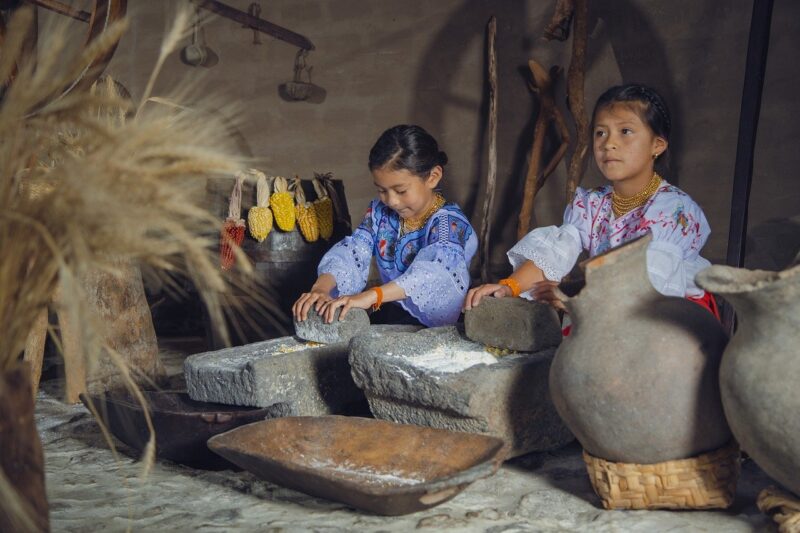
The world is a tapestry of cultures, beliefs, and practices, each offering a unique perspective on how to live life to the fullest. From the bustling streets of Tokyo to the serene beaches of Bali, exploring diverse lifestyles provides us with invaluable insights into the ways in which different communities interpret happiness, fulfillment, and purpose. In this article, we will delve into various lifestyles from around the globe, examining the traditions, values, and practices that shape the lives of people within those cultures.
1. The Minimalist Lifestyle: Living with Less in Japan
Japan is renowned for its minimalist lifestyle, commonly associated with the philosophy of simplicity and mindfulness. The concept of ‘Ikigai,’ which translates to “a reason for being,” plays a crucial role in the Japanese way of life, encouraging individuals to seek balance and purpose in their daily routines.
Minimalism in Japan is reflected in both aesthetic choices and lifestyle habits. Many Japanese homes showcase clean lines, open spaces, and a deliberate absence of clutter. This is not merely about aesthetics; it fosters peace and tranquility, allowing individuals to focus on what matters most in their lives.
Key elements of the minimalist lifestyle include:
- Decluttering: Regularly evaluating possessions and removing anything that does not add value or joy to life.
- Mindful Consumption: Choosing quality over quantity when it comes to products, experiences, and relationships.
- Nature Appreciation: Prioritizing time spent in nature, which offers a sense of connection to the environment and self.
The minimalist lifestyle encourages individuals to find contentment in what they have while promoting sustainability and conscious living.
2. The Communal Lifestyle: Embracing Community in Africa
In many African cultures, the concept of community is paramount, with lifestyle practices deeply rooted in the belief that “it takes a village to raise a child.” The communal lifestyle emphasizes interconnectedness and collective responsibility, where individuals support one another through shared experiences and resources.
Examples of this lifestyle can be seen in the African tradition of ‘Ubuntu,’ which translates to “I am because we are.” This philosophy fosters a sense of belonging and mutual respect among community members.
Key aspects of the communal lifestyle include:
- Collective Celebrations: Joyful occasions such as weddings, births, or harvest festivals are celebrated communally, strengthening bonds between individuals.
- Shared Resources: Families often pool resources to help one another, whether it’s in agriculture, housing, or education.
- Cultural Traditions: Storytelling, music, and dance play an integral role in maintaining shared traditions and cultural identity.
The communal lifestyle enhances social support networks, fostering resilience and a deep sense of connection among individuals.
3. The Adventurous Lifestyle: Thriving in New Zealand
New Zealand is synonymous with adventure and outdoor exploration, where the breathtaking landscapes inspire a lifestyle centered around nature and thrill-seeking. Known for its diverse terrain, ranging from majestic mountains to serene coastlines, New Zealanders often incorporate adventure into their daily lives.
This adventurous spirit is reflected in various activities such as:
- Hiking and Trekking: The numerous trails, including the iconic Tongariro Alpine Crossing, attract adventure enthusiasts year-round.
- Extreme Sports: Activities like bungee jumping, skydiving, and white-water rafting are popular among locals and tourists alike, creating an adrenaline-fueled lifestyle.
- Cultural Experiences: Many New Zealanders engage with indigenous Māori culture, participating in festivals and learning traditional practices that celebrate heritage alongside nature-oriented adventures.
The adventurous lifestyle in New Zealand encourages individuals to step out of their comfort zones, fostering personal growth and instilling a love for exploration.
4. The Traditional Lifestyle: Preserving Heritage in the Andes
In the Andes, indigenous communities maintain a traditional lifestyle that emphasizes ancestral knowledge and sustainable living. This lifestyle is characterized by various practices that reflect the harmony between humans and nature.
Communities like the Quechua and Aymara people uphold age-old traditions that influence everything from agriculture to spirituality. Their practices include:
- Terraced Farming: Utilizing ancient farming techniques to cultivate crops in the challenging mountainous terrain, promoting biodiversity and sustainability.
- Spiritual Connection to Nature: Nature is revered, and rituals are performed to honor the Earth’s cycles and ensure the well-being of the community.
- Artisanal Crafts: Skilled artisans create textiles and pottery using traditional methods, preserving cultural heritage while contributing to the economy.
The traditional lifestyle in the Andes offers invaluable lessons on sustainability, resourcefulness, and the importance of heritage.
5. The Wellness Lifestyle: Embracing Holistic Health in Scandinavia
Scandinavia is known for prioritizing well-being and a holistic approach to health. The Scandinavian lifestyle is characterized by a focus on balance, self-care, and community support, often referred to as ‘hygge’ in Denmark or ‘lagom’ in Sweden.
This wellness lifestyle embodies several key elements:
- Connection with Nature: Regular outdoor activities such as hiking, skiing, or simply spending time in green spaces promote physical and mental well-being.
- Healthy Eating Habits: A diet rich in whole foods, fish, and seasonal produce encourages well-being and sustainability.
- Importance of Community: Social connections are valued, with an emphasis on supporting one another through shared experiences and communal gatherings.
The wellness lifestyle in Scandinavia highlights the significance of finding balance in all aspects of life and maintaining a strong sense of community.
Conclusion: Embracing the Tapestry of Lifestyles
Exploring diverse lifestyles around the world reveals the beauty of human experiences and the myriad ways individuals find meaning and happiness. Whether through minimalism, community living, adventurous pursuits, traditional customs, or wellness practices, each lifestyle offers valuable lessons that can enhance our understanding of ourselves and the world around us.
In our increasingly globalized society, embracing this diversity allows us to learn from one another and cultivate a deeper appreciation for the rich tapestry of human life. By sharing our experiences and integrating aspects of various lifestyles into our own lives, we can live more fully and authentically, celebrating the beauty of our differences while recognizing the common threads that unite us all.







